
All categories
Featured selections
Trade Assurance
Buyer Central
Help Center
Get the app
Become a supplier

(10837 products available)


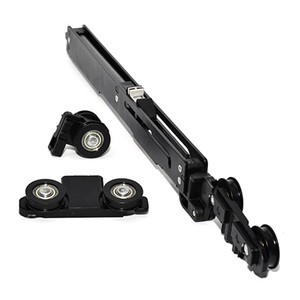


























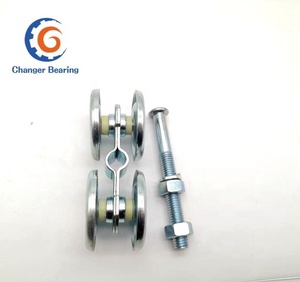



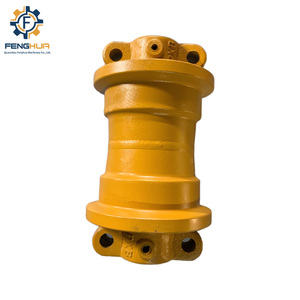
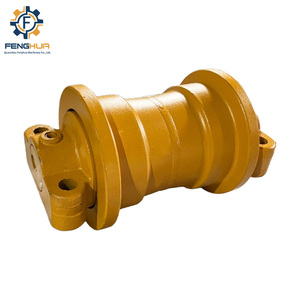


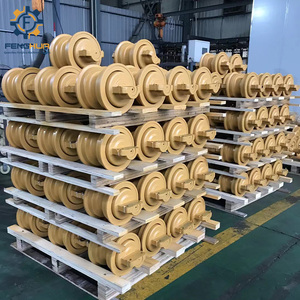



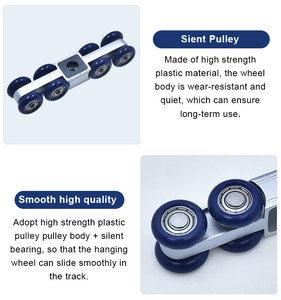









Roller track systems can be divided into a few distinct types. Each of these systems has its features and functionality. These are the most common types of systems:
Straight tracks are the simplest and most widely used. They provide a fixed and linear motion for the rollers. They are commonly used in warehouse operations and for product movement on assembly lines. The demand for predictable and straight product movement drives their popularity.
Curved systems allow movement at angles other than zero degrees. These tracks are useful when the layout of a workspace needs flexibility in the path of the movement. Beneficial, especially in packing and sorting applications, such systems help conserve space while retaining operational efficiency.
These systems enable rollers to operate smoothly in both directions. They are ideal for applications requiring back-and-forth movement. Loading docks and conveyor reverse systems are among the few places that often employ this type of system.
As the name suggests, these systems use the force of gravity to move objects. They are typically installed on a slight incline. Common in shipping and order fulfillment centers, these systems, in particular, offer an energy-efficient means of transporting lightweight goods.
There are many places where roller systems are used because they are good at moving and handling products.
In this industry, the systems help to move heavy components through production lines. The efficiency and durability of these systems make them critical for transporting goods between different stages of manufacturing processes.
There are probably no systems better suited to warehousing than roller track systems. They facilitate the speedy movement of packages along conveyor systems with minimal manual handling. These systems enhance order-picking speeds and accuracy, significantly improving warehouse efficiency.
Roller tracks are prevalent in retail environments during the sorting and transporting of products. These systems speed up the movement of items from stock to sales floors, reducing manual labor and increasing productivity.
These systems are used to move large car parts and materials for building cars and other vehicles. Tracks support the weight and provide smooth movement, essential for handling heavy components within this sector.
In farming, tracks help to move things like grains and feed. So, the systems are installed in silos and feed handling equipment. Thus, making them important for managing materials in agricultural environments.
So, to put this all together, here are some key features and specifications of roller track systems:
Durability
Most of the track systems are made of steel or heavy-duty aluminum. These materials ensure they are suited for industrial environments. The strong materials guarantee long-term operation without frequent replacements or repairs.
Modular Design
Around 70% of the systems are designed to be easily assembled and reconfigured. So, the modular design allows for adjustments based on changing operational needs or layouts. This flexibility is crucial in dynamic industries like logistics and manufacturing.
Compatibility with Various Loads
These systems can handle a wide range of product sizes and weights. These systems are versatile enough to accommodate different operational requirements. Therefore, ensuring that they meet diverse needs.
Low Maintenance
Many tracks require minimal maintenance under normal working conditions. This feature saves both time and costs associated with upkeep in high-demand environments.
Installation of these systems largely depends on the type and layout of the system. Since there are straight and curved tracks, the process is different for each.
Straight Tracks
These are relatively easy to install. The first step is to mount the track onto the frames. Then, one has to secure the track by fastening it firmly to the structure. Afterward, the rollers are then placed onto the tracks. Lastly, a functional check ensures proper movement before the system goes live.
Curved and Bi-Directional Tracks
Installing these tracks is more complex. The initial step involves assembling the curved sections carefully to maintain smooth transitions. Then, install the tracks by securing them to the designated frames. Once secured, the system undergoes adjustments to ensure proper alignment. Proper alignment is crucial for smooth operations.
The best news is that once installed, these systems require little effort to put them to work. Not to mention, weekly inspections are essential to prevent minor issues from escalating. These also include checking for wear on the rollers or tracks. During these weekly inspections, cleaning the tracks is also a must. Dirty tracks hinder the smooth movement of objects.
The other most common practice is to lubricate the rollers and tracks. This is done quarterly, and it helps minimize friction, prolonging the life of the system. Replacing worn rollers or parts immediately guarantees safety and efficiency.
Lastly, put systems under strain beyond their rated capacity. Excessive loads can cause permanent damage to both the rollers and the track system.
Load Distribution
Always distribute the load evenly across the track. Uneven weight can cause accidents or damage to the system. Avoid placing heavy items in one spot on the tracks. Roller track systems are particularly designed for linear motion.
Use of Safety Guards
Some people also use safety guards. These guards prevent items from falling off the tracks. Falling goods can hurt workers or damage property. Installing guards reduces many risks.
Regular Maintenance:
As mentioned earlier, the systems need regular inspections to avoid problems from growing bigger. Worn or damaged parts can cause slips or breakdowns. Fix any problems right away to keep everything safe.
Emergency Stops
Many tracks have stop buttons or levers. These let workers quickly halt movement in case of danger. Teach everyone how to use these emergency stops. It will help prevent many injuries.
Proper Training
People should get instruction on using the track systems safely. They must understand guidelines. Help workers learn precautions to keep the workplace safe.
No Modifications
Never change or modify systems without consulting an expert. Customizations may weaken the structure. Always check with the manufacturer to ensure the system stays safe.
Here are some factors buyers should consider when choosing these systems for their customers:
Selecting the correct equipment depends on the primary job. Determine the load weight and size as well as the movement distance. It is also important to know how frequently the equipment will be used. Choose a system that meets the specific operational requirements. Doing this helps to avoid performance downtimes.
Good news! The materials used to make the track system directly affect how well it works. Long-lasting materials are less likely to wear down. They also tolerate exposure to moisture, chemicals, and heavy use. Check if the track is made from steel or aluminum. These are robust and, therefore, great for long-term use.
Manufacturing plants have different arrangements. So, it is necessary to choose a system that suits the current layout. Flexible solutions can combine straight and curved tracks. These tracks can adapt to tight spaces and complex routes. The better the track system fits the space, the more efficient the operations will be.
A lot of manufacturing plants already have equipment in place. Track systems should work well with existing conveyors and machinery. This integration helps provide a seamless flow. Compatibility reduces the need for major adjustments to current operations.
People do not want equipment that is hard to put together or look after. Buyers should look for options that install quickly. It will help reduce delays in work. Maintenance is another thing to look at. Systems that need little regular care will save operating costs. Simple upkeep tasks will also minimize disruptions in work.
Always choose a reliable supplier. So, how does one tell if a seller is reputable? Well, they can look at customer feedback. Sellers with proven records in delivering quality track systems are usually the best choice. Good customer service makes sure that clients get help when there are problems. Timely support prevents long-term use from being interrupted.
A1. Nope! They are actually simple to care for. Most need just occasional checks and cleanings. Its wear and tear is also minimal compared to other options.
A2. Yes, of course! Many are rated for outside work. Those that will be used outdoors are often treated to resist rusting. Thus, making them ideal for outdoor jobs.
A3. These systems can bear heavy weights, of course. Some handle over 1,200 pounds of mass. However, always check the specs to make sure they don’t exceed their limits.
A4. These systems are most commonly made from either steel or aluminum. Technically speaking, they are both strong and durable. Plus, they are also resistant to corrosion.
A5. The good news is that they use no energy. Remember, the gravitational systems rely only on a slight slope to move objects. This feature helps save power over long-term use.